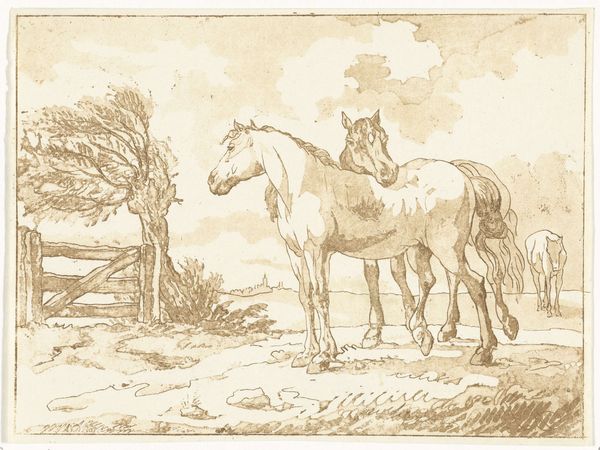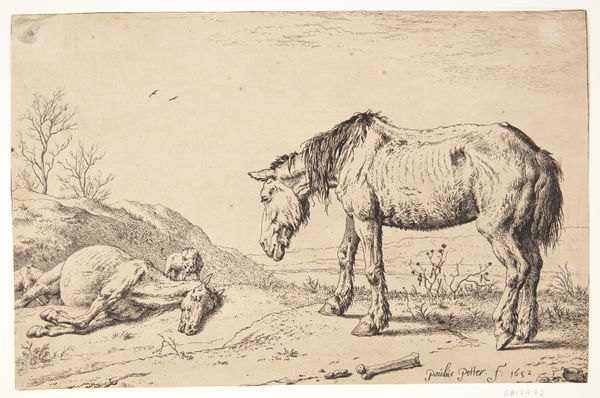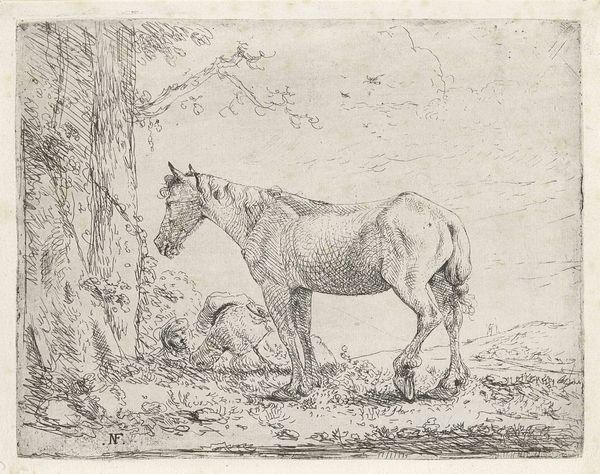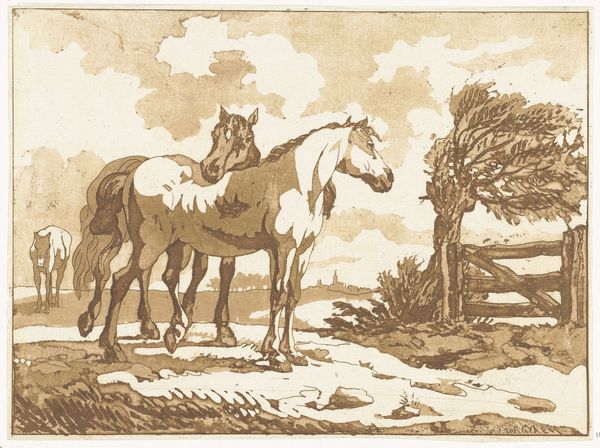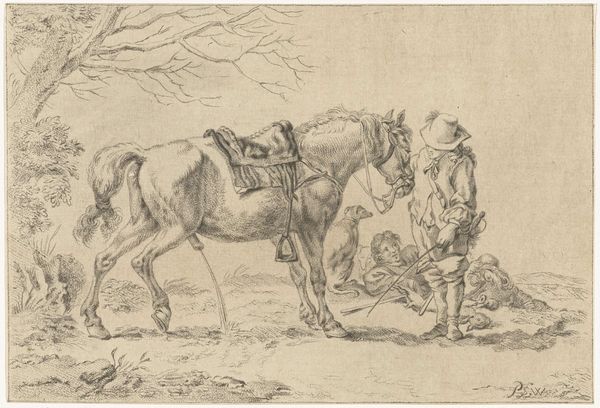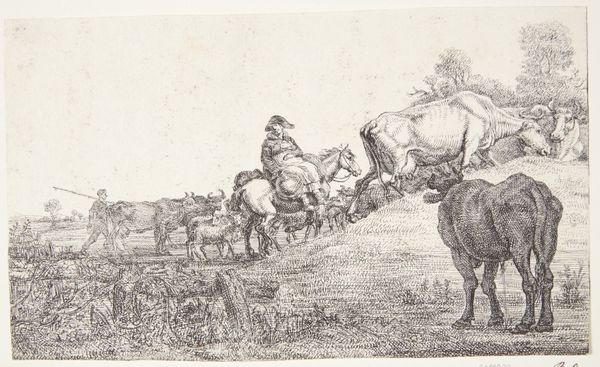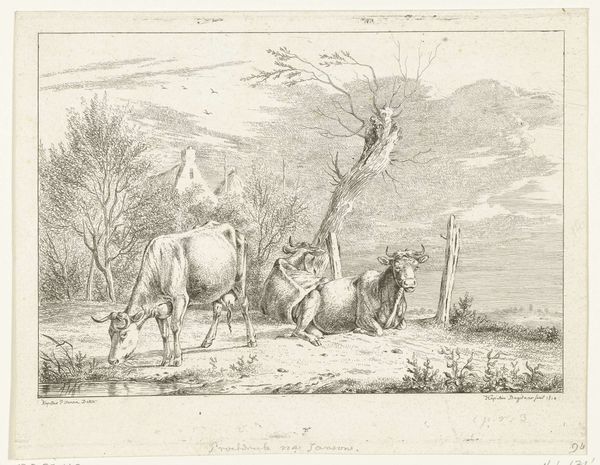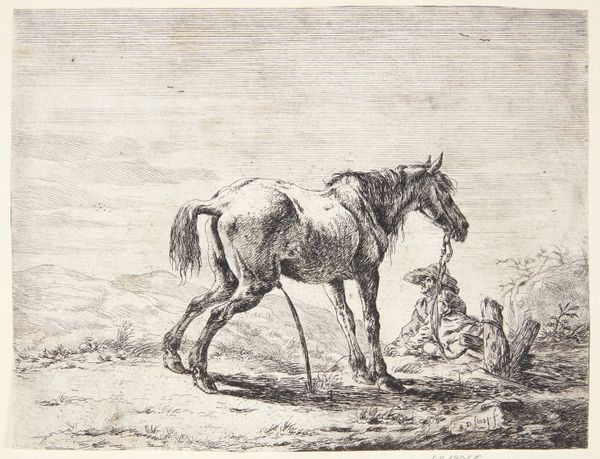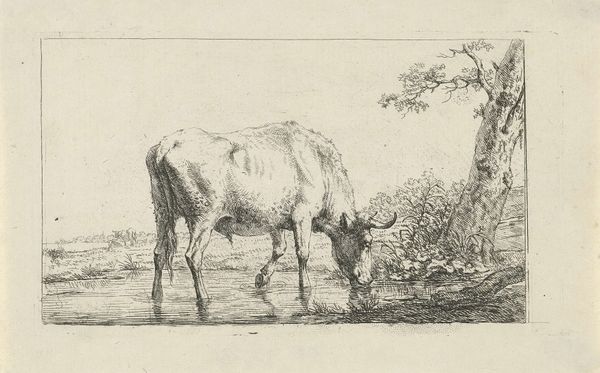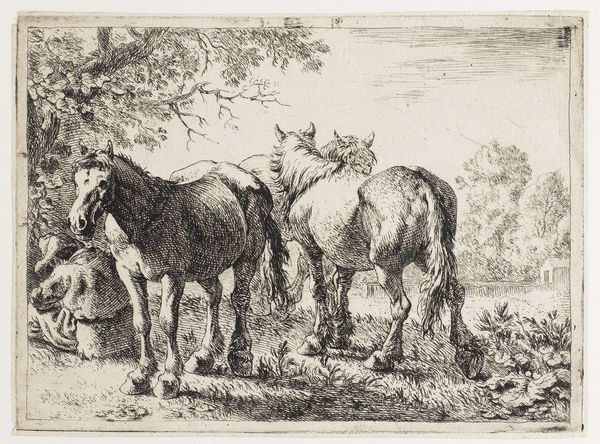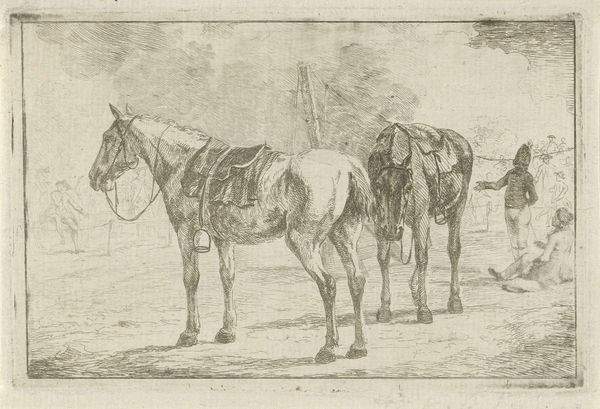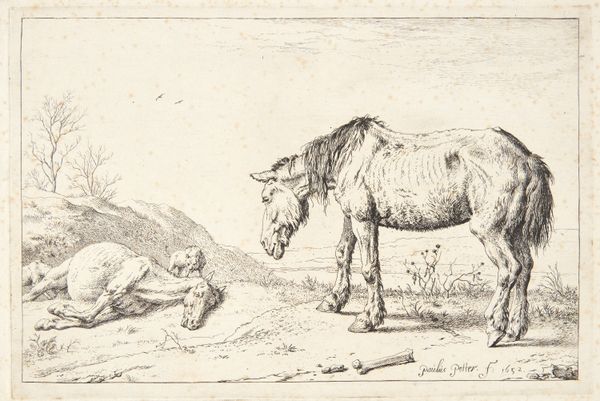
drawing, pencil
#
landscape illustration sketch
#
drawing
#
quirky sketch
#
mechanical pen drawing
#
pen illustration
#
pen sketch
#
pencil sketch
#
landscape
#
figuration
#
personal sketchbook
#
ink drawing experimentation
#
romanticism
#
pen-ink sketch
#
pencil
#
sketchbook drawing
#
genre-painting
Dimensions: height 135 mm, width 194 mm
Copyright: Rijks Museum: Open Domain
Curator: Let's take a look at "Ruiter staand naast pissend paard," a pen and pencil drawing held at the Rijksmuseum and created sometime between 1775 and 1833 by Jean Bernard. It presents a landscape scene with a rider standing by their horse, engaged in a very… natural activity. What's your first impression? Editor: Well, I immediately notice the raw honesty of it. It’s not idealized in any way. It's a glimpse into the material realities of life, the body and its functions amidst this otherwise unremarkable landscape. Curator: Absolutely. Think about the context – the paper, the ink, the very act of sketching outdoors. These were precious, limited resources, reflecting a world where the depiction of everyday tasks like this held a different value. The drawing medium also provides an interesting connection to craft, like an artisan's approach to creating the art. Editor: It’s interesting how the seemingly mundane act becomes almost iconic through representation. We see the horse not merely as an animal, but also a symbol of labor, companionship, and the rural way of life, if perhaps a somewhat unflattering depiction. The very act of urination becomes a loaded signifier—reductive, almost, but also an insistence of lived experiences into the visual. Curator: Good point. It really makes you consider the labor involved, both for the artist and the figures within the work. What sort of processes would it have taken to create a piece of art using such resources? What kind of physical labor do both man and animal face as depicted in this very moment? Editor: I find it quite refreshing. In a world increasingly focused on constructed images, there is something genuine about the artist's straightforward visual language of representation here, and I find that rather memorable and humanizing. Curator: It offers an opportunity to contemplate artistic work through a material and tangible process, an intentional means by which to consider production, social, and physical actions of both artist and subject. Editor: It does, doesn't it? Well, looking at the end result, it's quite memorable. Curator: I agree.
Comments
No comments
Be the first to comment and join the conversation on the ultimate creative platform.
